#Phyllophaga
Text

Bug of the Day
I am getting weird Gulliver's Travels vibes from this photo of a May/June beetle (Phyllophaga sp.) that turtled at the light last summer. If I had art skillz I would draw the ropes these flies are obviously using to keep the beetle tied down lol.
#Phyllophaga#May beetle#June beetle#beetle#Scarabaeidae#Coleoptera#insect#Gulliver's Travels#BotD#bug of the day
153 notes
·
View notes
Text

poor little junebug
[ID: watercolor illustration showing a crushed junebug (phyllophaga) in the center of a sky-blue background. behind it are two yellow disks; in front of it are two red rings.]
22 notes
·
View notes
Text
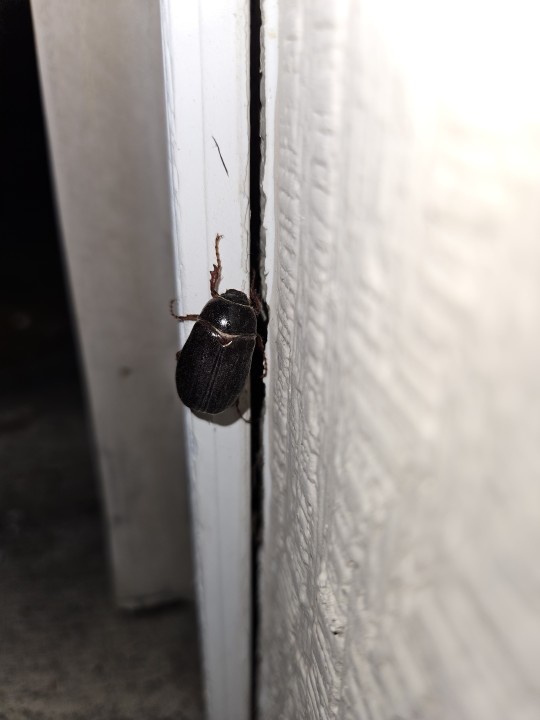
Junebug (genus Phyllophaga), April 2023
Southwestern PA
This is not the junebug I am familiar seeing (I am more familiar with the light brown type), but it appears to be in the same (very large!) genus.
0 notes
Text
Perezosos-Los folívoros-Folivora- o filófagos (Phyllophaga)

Los folívoros (Folivora) o filófagos (Phyllophaga) son un suborden de mamíferos placentarios del orden Pilosa, comúnmente conocidos como perezosos o pereza. Son animales neotropicales de variado tamaño endémicos de las selvas húmedas de América Central y América del Sur . Las especies actuales se pueden clasificar en dos géneros: los perezosos de tres dedos (Bradypus, Bradypodidae) y los perezosos de dos dedos (Choloepus, Choloepodidae), pero se conocen más de 50 géneros
#Los folívoros (Folivora) o filófagos (Phyllophaga) son un suborden de mamíferos placentarios del orden Pilosa comúnmente conocidos como pere#¿Esta es la imagen y algunos datos (O no) la “Historia” la pones tú? ¡La tuya! ¿Lo harás...?
5 notes
·
View notes
Note
thoughts on the genus phyllophaga?
=-•‿‿•-=
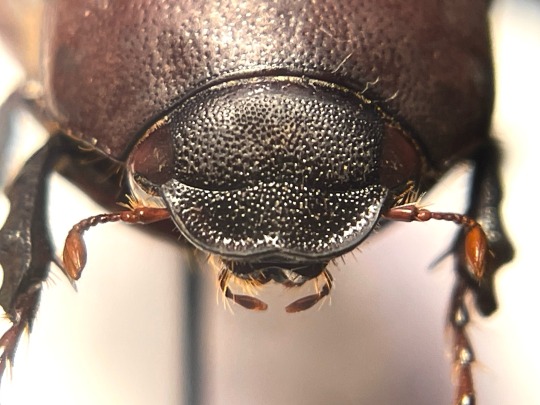
328 notes
·
View notes
Text
Pelecinus polyturator. 🖤 Probably in my top 5 favourite Hymenopterans along with Tremex columba. They are parasitoids of Phyllophaga larvae. Female populations further North are known to be parthenogenetic as males are rare. Males are more common as you go South, however.
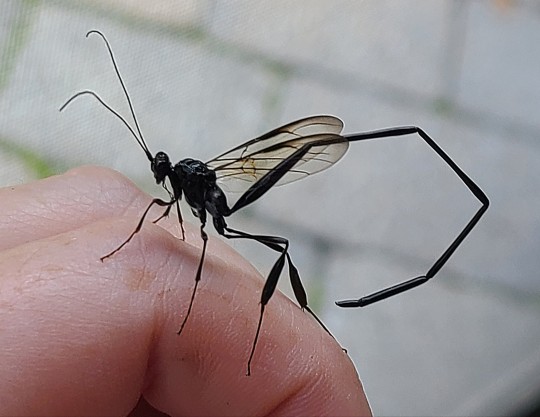
#hymenoptera#insect#wasp#entomology#wasps#apocrita#parasitica#Proctotrupoidea#Pelecinidae#Pelecinuspolyturator#PelecinidWasp
394 notes
·
View notes
Text
Uncharismatic Fact of the Day
Scarab beetles are most commonly associated with ancient Egypt, but the species there represent only a tiny fraction of the population. Worldwide there are more than 32,000 described species of scarab beetle, including dung beetles, rose chafers, and rhinoceros beetles. Each year about 200 new species of scarab beetle are discovered.
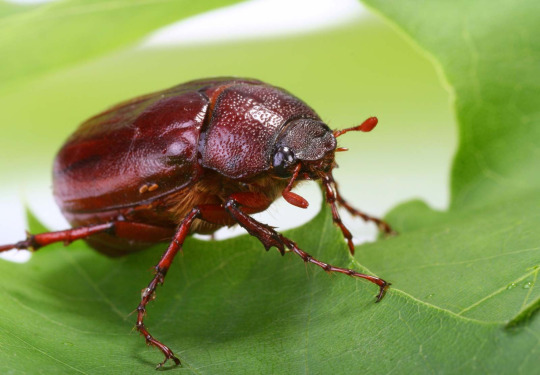
(Image: A June bug (Phyllophaga sp.), one of the members of the large Scarabaeidae family, by Piotr Kozikowski)
If you like what I do, consider leaving a tip or buying me a kofi!
163 notes
·
View notes
Text
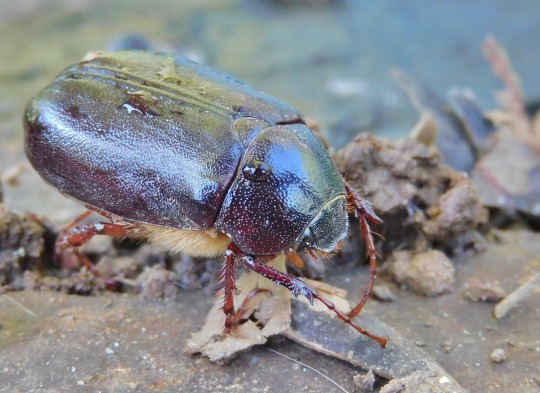

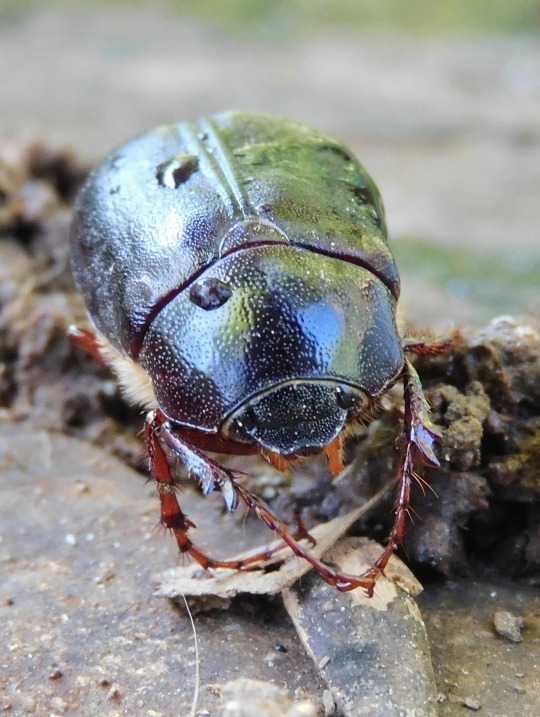
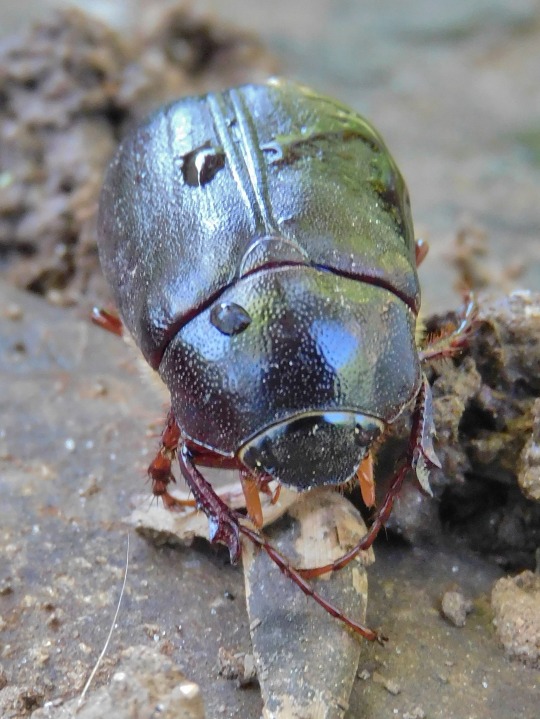
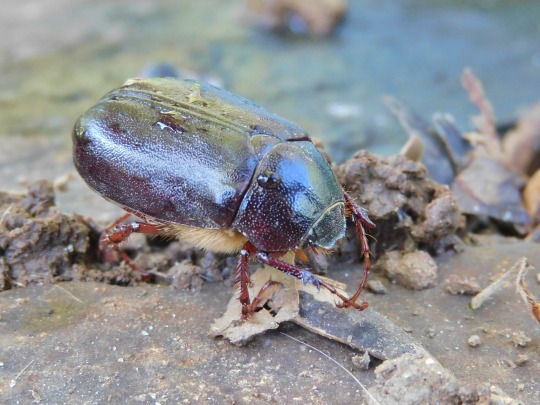
May Beetle (Phyllophaga... sp.) found under the communal water bowl this morning....
7 notes
·
View notes
Text
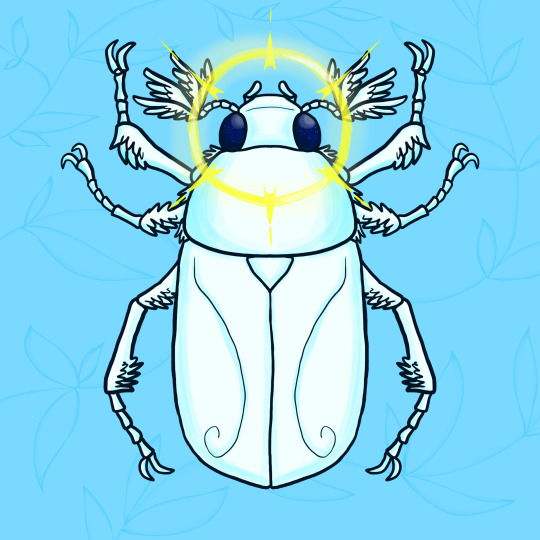
JuneBug: Wouldn't be complete without a Celestial Junebug (Phyllophaga)
34 notes
·
View notes
Text
Back on my hyperfixation shenanigans so I have not slept and here's a list of what I consider to be the prettiest beetles, butterflies and moths, damselflies, and grasshoppers and crickets that inhabit Colorado and Kentucky according to insectidentification.org :
COLORADO
Emerald ash borer (Agrilus planipennis)
Fifteen-spotted lady beetle (Anatis labiculata)
Golden tortoise beetle (Charidotella sexpunctata)
Knapweed root weevil (Cyphocleonus achates)
Longhorn beetle (Semanotus amethystinus)
Dogbane Leaf Beetle (Chrysochus auratus)
European Ground Beetle (Carabus nemoralis)
Golden Net-wing Beetle (Dictyoptera aurora)?
Margined Blister Beetle (Epicauta funebris)
May Beetle - P. lanceolata (Phyllophaga lanceolata)
Mottled Tortoise Beetle (Deloyala guttata)
Pleasing Fungus Beetle (Gibbifer californicus)
Poplar Borer Beetle (Saperda calcarata)
Shining Leaf Chafer - Anomala spp. (Anomala spp.)
Signate Lady Beetle (Hyperaspis signata)
American Lappet Moth (Phyllodesma americana)
Cinnabar Moth (Tyria jacobaeae)
Common Checkered-Skipper (Pyrgus communis)
Glover's Silkmoth (Hyalophora columbia gloveri)
Great Ash Sphinx Moth (Sphinx chersis)
Autumn Meadowhawk (Sympetrum vicinum)
Black Saddlebags Skimmer (Tramea lacerata)
Bird Grasshopper (Schistocerca spp.)
Obscure Bird Grasshopper (Schistocerca obscura)
Sooty Longwing Katydid (Capnobotes fulginosus)
KENTUCKY
Andrew's Snail-eating Beetle (Scaphinotus andrewsii)
Black Firefly (Lucidota atra)
Calligrapha Beetle (Calligrapha spp)
Eastern Hercules Beetle (Dynastes tityus)
Emerald Euphoria Beetle (Euphoria fulgida)
Glowworm (Phengodes spp.)
Goldsmith Beetle (Cotalpa lanigera)
Metallic Wood-boring Beetle: Chalcophora (Chalcophora fortis)
Notched-mouth Ground Beetle (Dicaelus purpuratus)
One-spotted Tiger Beetle (Apterodela unipuncata)
Rainbow Darkling Beetle (Tarpela micans)
Rainbow Scarab Beetle (Phanaeus vindex)
Six-spotted Tiger Beetle (Cicindela sexguttata)
Southern Sculptured Pine Borer Beetle (Chalcophora georgiana)
Stag Beetle (Lucanus capreolus)
Twice-stabbed Lady Beetle (Chilocorus stigma)
Vietinghoff's Ground Beetle (Carabus vietinghoffii)
Abbott's Sphinx Moth (Sphecodina abbottii)
American Ermine Moth (Yponomeuta multipunctella)
Arched Hooktip (Drepana arcuata)
American Bird's-Wing Moth (Dypterygia rozmani)
Arcigera Flower Moth (Schinia arcigera)
Attentive Crocus Moth (Xanthotype attenuaria)
Basswood Leafroller (Pantographa limata)
Beautiful Wood-Nymph (Eudryas grata)
Black-waved Flannel Moth (Megalopyge crispata)
Blackberry Looper (Chlorochlamys chloroleucaria
Blinded Sphinx Moth (Paonias excaecata)
Bluish Spring Moth (Lomographa semiclarata
Buck Moth (Hemileuca maia)
Carmine Snout Moth (Peoria approximella)
Carrot Seed Moth (Sitochroa palealis)
Cecropia Silk Moth (Hyalophora cecropia)
Changeable Grass-Veneer (Fissicrambus mutabilis)
Colorful Zale (Zale minerea)
Common Lytrosis Moth (Lytrosis unitaria)
Confused Eusarca (Eusarca confusaria)
Cross-lined Wave (Timandra amaturaria)
Curve-toothed Geometer (Eutrapela clemataria)
Dark-banded Geometer (Ecliptopera atricolorata)
Deep Yellow Euchlaena (Euchlaena amoenaria)
Diaphania costata (Diaphania costata
Dimorphic Macalla (Epipaschia superatalis)
Dot-lined White (Artace cribrarius)
Dotted Gray (Glena cribrataria)
Drab Prominent (Misogada unicolor)
Eight-spotted Forester Moth (Alypia octomaculata)
Elder Shoot Borer (Achatodes zeae)
Explicit Arches (Lacinipolia explicata)
Eyed Paectes Moth (Paectes oculatrix)
Falcate Orangetip (Anthocharis midea) (female)
Fall Webworm (Hyphantria cunea)
False Crocus Geometer (Xanthotype urticaria
Fervid Plagodis (Plagodis fervidaria)
Fig Sphinx (Pachylia ficus)
Friendly Probole Moth (Probole amicaria)
Giant Leopard Moth (Hypercompe scribonia)
Goldcap Moss-eater Moth (Epimartyria auricrinella)
Gray-edged Hypena (Hypena madefactalis)
Green Arches (Anaplectoides prasina)
Hag Moth (Phobetron pithecium
Hibiscus Leaf Caterpillar Moth (Rusicada privata)
Imperial Moth (Eacles imperialis)
Lesser Maple Spanworm Moth (Speranza pustularia
Luna Moth (Actias luna)
Melissa Blue Butterfly (Plebejus melissa spp.)
Modest Sphinx Moth (Pachysphinx modesta)
Morbid Owlet Moth (Chytolita morbidalis)
Orange-patched Smoky Moth (Pyromorpha dimidiata)
Pale Beauty (Campaea perlata)
Pale Lichen Moth (Crambidia pallida)
Pale Metarranthis (Metarranthis indeclinata)
Pandorus Sphinx Moth (Eumorpha pandorus)
Parthenice Tiger Moth (Apantesis parthenice)
Pearly Wood-Nymph Moth (Eudryas unio)
Pero Moth (Pero spp.)
Pink-patched Looper (Eosphoropteryx thyatyroides)
Pipevine Swallowtail (Battus philenor)
Pistachio Emerald Moth (Hethemia pistasciaria)
Plebeian Sphinx Moth (Paratrea plebeja) (Caterpillar)
Primrose Moth (Schinia florida)
Promiscuous Angle Moth (Macaria promiscuata)
Raspberry Pyrausta (Pyrausta signatalis)
Rustic Sphinx Moth (Manduca rustica)
Saddleback Caterpillar Moth (Acharia stimulea)
Saddled Yellowhorn (Colocasia flavicornis)
Salt-and-pepper Looper Moth (Syngrapha rectangula)
Satin Moth (Leucoma salicis)
Scarlet-winged Lichen Moth (Hypoprepia miniata)
Schlaeger's Fruitworm Moth (Antaeotricha schlaegeri)
Showy Emerald Moth (Dichorda iridaria)
Small Bird Dropping Moth (Ponometia erastrioides)
Snowy Urola (Urola nivalis)
Sorghum Webworm Moth (Nola cereella)
Southern Flannel Moth (Megalopyge opercularis)
Southern Longhorn Moth (Adela caeruleella)
Southern Pine Sphinx (Lapara coniferarum)
Southern Tussock Moth (Dasychira meridionalis)
The Badwing (Dyspteris abortivaria)
Unspotted Looper Moth (Allagrapha aerea)
Venerable Dart Moth (Agrotis venerabilis
Vine Sphinx Moth (Eumorpha vitis)
Walnut Sphinx Moth (Amorpha juglandis)
Wavy-lined Emerald Moth (Synchlora aerata)
Western Grapeleaf Skeletonizer Moth (Harrisina metallica)
White Flannel Moth (Norape ovina)
White Slant-line Moth (Tetracis cachexiata)
White-fringed Emerald Moth (Nemoria mimosaria)
Yucca Moth (Tegeticula, Greya, and Prodoxus spp.)
Carolina Locust (Dissosteira carolina)
Eastern Shieldback Katydid (Atlanticus spp.)
Slender Meadow Katydid (Conocephalus fasciatus)
True Katydid (Pterophylla camellifolia)
Ebony Jewelwing (Calopteryx maculata)
Midland Clubtail (Gomphurus fraternus)
Red Saddlebags (Tramea onusta)
Seepage Dancer (Argia bipunctulata)
5 notes
·
View notes
Photo
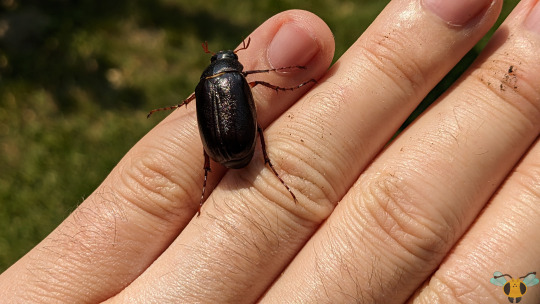


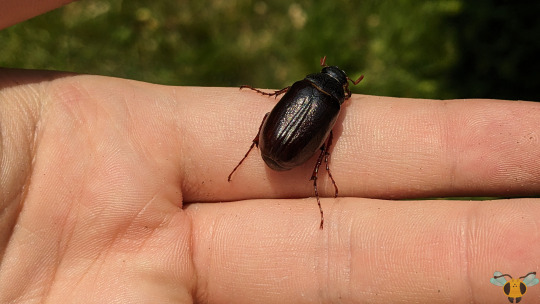






May Beetle - Phyllophaga sp.
Digging in the soil and turning over stones to place fresh mulch has uncovered more than simple Wireworms to examine. While helping my parents rejuvenate the backyard with sack upon sack of cedar mulch, a few photogenic insects were discovered beneath the landscape fabric. Before the large-sized insect I’ve found were May Beetle Larvae and Cicada Nymphs nestled in the earth, but this time there were a multitude of adult May Beetles to find! 6 individuals total, all just from a small section of the the yard, and that’s just some a sampling of surface level soil. In any case, they’d all finished their pupation but hadn’t yet dug all the way up to the surface. It must have been a rude awakening for them to suddenly go from earthy darkness to the approach of summer. Given how some of them fly into light sources when above ground I’m not sure all of them have fully woken up. In all seriousness, the shift to live above ground is a big change for these subterranean Scarabs: they need to switch diets from roots to leaves, they need to make use of their new wings to navigate long distances and find mates, and the surface has different dangers compared to the underground. Even the air is different up here!
Consider the lattermost change: underground air isn’t easy to come by and there are many earthen particulates to keep out of a spiracle. The Larvae are tough however, and well-suited to underground conditions (and fortunately insects can temporarily halt their breathing when conditions aren’t favorable) whether foraging, tunneling, defense or finding air pockets. Conversely, when above ground as an adult there’s air all around to take in and provide extra power for locomotion and flight while coated in heavy armor! Metamorphosis creates many amazing things, but Phyllophaga Beetles can only fly so well under the circumstances...usually into light sources. I’ve been divebombed a few times over the last few weeks at night by freshly emerged Beetles who’ve tunneled their way upward. It’s like a series of glossy beans popping out of the garden or the forest! The individuals dug up during gardening got it easy and can now enjoy the summer air and delicious leaves. Their time for the year will likely finish soon, but if you’re sharp-eyed, look for cylindrical tunnels in the soil. May Beetles dig their way out from below, and if there is one tunnel, there may be more prospective Coleopterans nearby to find prodding their way out...at least until Cicada season is upon us!
Pictures were taken on June 3, 2023 with a Google Pixel 4. There’s no better insect to showcase as May changes into June. And remember, though they may startle you with their first impression/collision, they are perfectly harmless little beans.
#jonny’s insect catalogue#ontario insect#beetle#may beetle#june bug#coleoptera#scarab beetle#insect#toronto#june2023#2023#entomology#nature#invertebrates
6 notes
·
View notes
Text

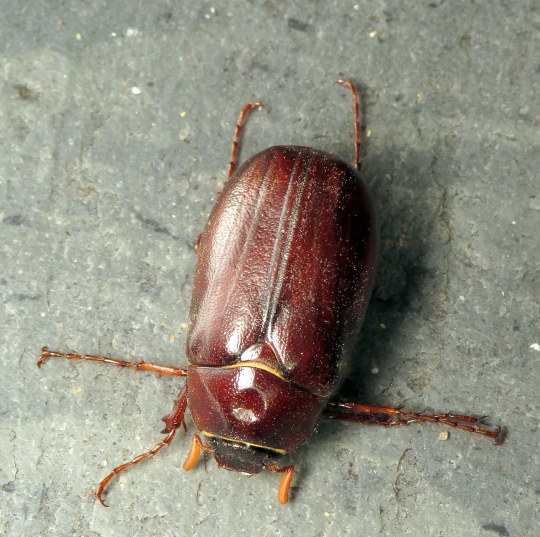
Bug of the Day
Guys, I am dead serious here - if these came in a supersized version that was like the size of a Pomeranian, I would be walking around town with one on a leash ;-D
(May/June beetle, Phyllophaga sp.)
196 notes
·
View notes
Text

June Bug Day is rightly observed on June 7. June bugs, a part of the Phyllophaga genus, are most visible this month. They spring up from the ground, searching for food and a mate at this time of year.
#JuneBugDay#bugday#SamAndCo#SamAndCoPets#petstore#petshop#petstagram#doglovers#petlovers #petshoponline#petlover#petsupplies#doglover#petaccessories#animals#samandcopetsupplies#onlinepetstore#bestpetsupplies#boutiquepetstore#onlineshop
0 notes
Text
Perezosos-Los folívoros-Folivora- o filófagos (Phyllophaga)

#Los folívoros (Folivora) o filófagos (Phyllophaga) son un suborden de mamíferos placentarios del orden Pilosa comúnmente conocidos como pere#¿Esta es la imagen y algunos datos (O no) la “Historia” la pones tú? ¡La tuya! ¿Lo harás...?
3 notes
·
View notes
Note

a little guy visited me (phyllophaga sp./june bug)
nice beast
105 notes
·
View notes